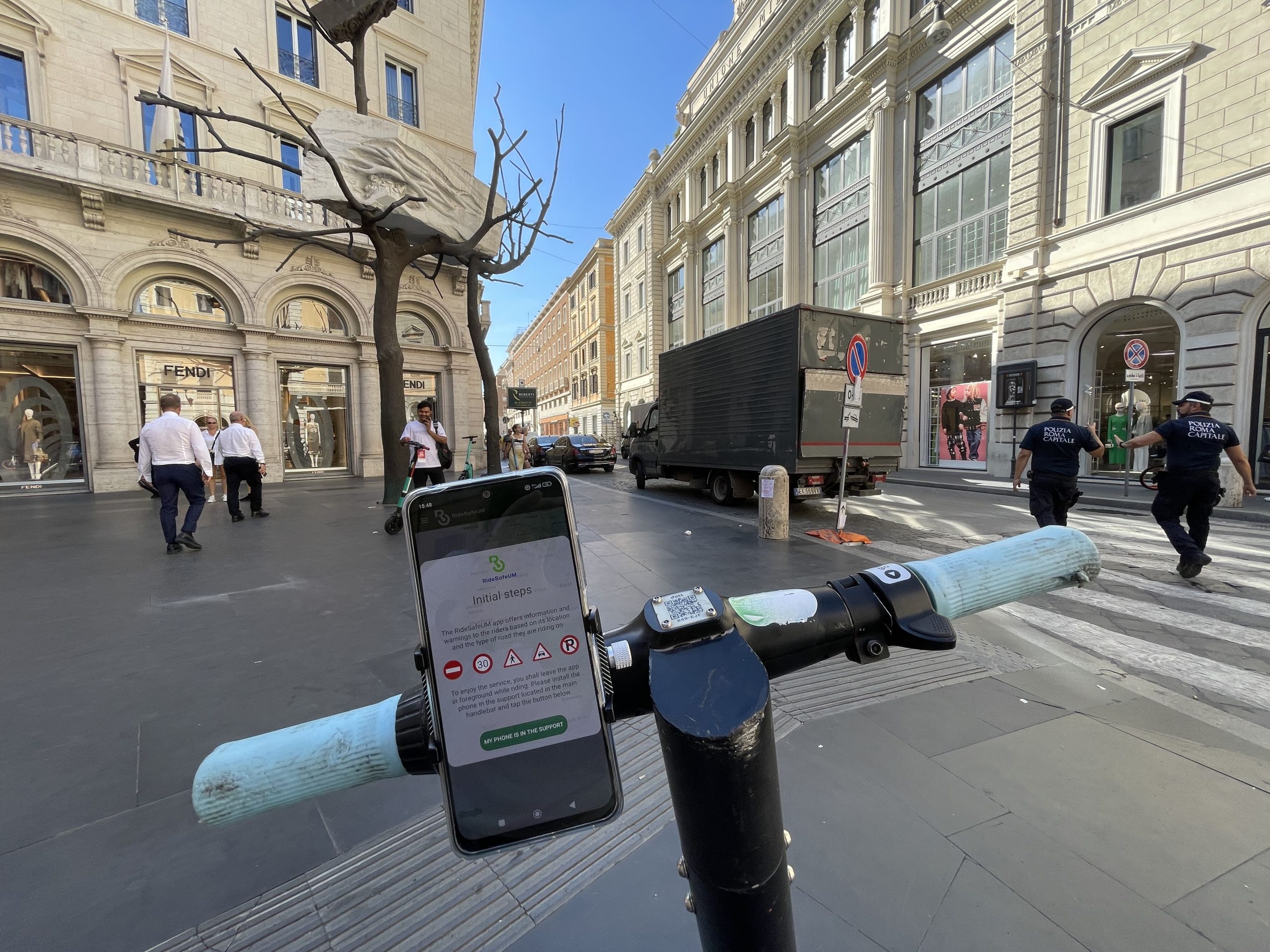
New materials to improve the useful life of pipes for collecting urban solid waste
October 10, 2022
SARAS: Autonomous robotic arms with a cognitive system to assist surgeons in the operating room
October 24, 2022The Image and Video Processing Group (GPI) and the Remote Sensing Research Group (RSLAB) of the UPC are participating in RideSafeUM, a project led by CARNET and co-funded by the EIT Urban Mobility. This is an initiative of the European Institute of Innovation and Technology (EIT), a body of the European Union. RideSafeUM emerged in response to the need to make micromobility safer and promote the use of transport modes that are key for the future of our mobility systems. The project will bring micromobility safety benefits to users, public authorities, and operators through the use of innovative technology.
Micromobility, a sector with exponential growth
The micromobility sector has grown exponentially in our cities. While bicycles have been a common mode of transport popular for a while and bike-sharing systems started blooming in the mid-2000s, the unprecedented growth in micromobility offer that our cities have witnessed since the mid-2010s can surely be classed as a revolution. At the same time, micromobility has presented itself as a deal-breaker when it comes to solving some of our most pressing urban mobility challenges. However, the full potential of micromobility has not yet been exploited. Safety is one of these key issues and is considered one of the most important aspects to consider to increase user engagement, that is, commitment to regular use, of those who adopt these new models of mobility.


Improve the safety of micromobility vehicles
RideSafeUM will allow proactive prevention of accidents involving personal mobility vehicles and the gathering of data to increase knowledge, make appropriate policies and carry out better management of micromobility in our cities.
The solution that has been developed is based on an application for mobile phones that integrates computer-vision software based on artificial intelligence, an accident detection system and other functionalities. This application informs users in real time of the micromobility restrictions that are applied at each point in time. In addition, through a control panel, the authorities in each city can analyse the data generated to identify the most problematic zones and infrastructures in terms of micromobility. At the same time, alerts will be sent to the authorities if an accident occurs, using a black-box function similar to that of airplanes. Through this, every time there is an accident a video of the last ten seconds before the accident will be sent to the control panel, so that they city can determine the causes.
During the months of September, October, November and December, pilot tests will be carried out in Barcelona, Roma and Thessalonica. The solution is designed to be adaptable and valid for shared micromobility services and privately owned devices.

The contribution of the UPC
UPC’s participation is focused on the development of a computer-vision algorithm based on AI to identify the type of lane that the RideSafeUM user is travelling on that has been integrated into the application. In addition, the UPC is responsible for creating an accident detection system using the gyroscope data of the mobile device.
In addition to the UPC and CARNET, the members of the consortium are Barcelona City Council with technological support from the Municipal Institute of Information Technology (IMI), Roma Mobilità, Thessaloniki Major Development Agency, Dott and Thessbike, Applus IDIADA, BRAINBOX and FACTUAL, the Hellas Research and Technology Centre (CERTH).
The project will last a year and has a total budget of €723,497.
Objective: Improve safety and promote the use of micromobility
Expected results: A smartphone application that informs users in real time about the micromobility restrictions that are applied at each point in time. In addition, through a control panel, the authorities in each city can analyse the data that are generated to identify the most problematic areas and infrastructure in terms of micromobility.
JOIN OUR PILOTS
If you are interested in the project and you would like to take part in the pilot studies, all the information is on the project’s website: https://ridesafeum.com
Sectors
You want to know more?
Related Projects
- The Barcelona Innovative Transportation (BIT), the Research Center in Automotive and Advanced Mobility (CER-AMA) and The Future Mobility Research Hub (CARNET) research groups from the Universitat Politècnica de Catalunya - BarcelonaTech (UPC) are participating in the E-MED project, which aims to optimise energy and resource efficiency in public transport systems by addressing energy price fluctuations through smart and participatory solutions across the Mediterranean region.
- A research team involving the Barcelona Innovative Transportation (BIT), inLab FIB, CARNET Barcelona – Future Mobility Research Hub (CER-AMA), and the Department of Computer Architecture (DAC) of the Universitat Politècnica de Catalunya - BarcelonaTech (UPC) is driving the i-MovE project, which aims to incorporate multisectoral data to provide much more accurate and valuable information for the mobility sector. The project develops four use cases focused on both companies and mobility authorities, covering public and individual transport, using the UPCxels demonstrator.
- The Research Center for Supervision, Safety and Automatic Control (CS2AC-UPC) at the Universitat Politècnica de Catalunya - BarcelonaTech (UPC) has coordinated the SaCoAV project, focused on researching new methods and tools to ensure the safe coordination of autonomous vehicles in urban environments.
- As part of the USEFUL project, the Centre for Sensor, Instrumentation and Systems Development (CD6) at the Universitat Politècnica de Catalunya - BarcelonaTech (UPC) has equipped a low-emission vehicle that will drive through the streets of Terrassa with optical sensors integrated into a complex system for data computing, visualisation, and storage. This car will collect and store thousands of anonymous driving data points, which will be used to develop more accurate algorithms for autonomous driving.




